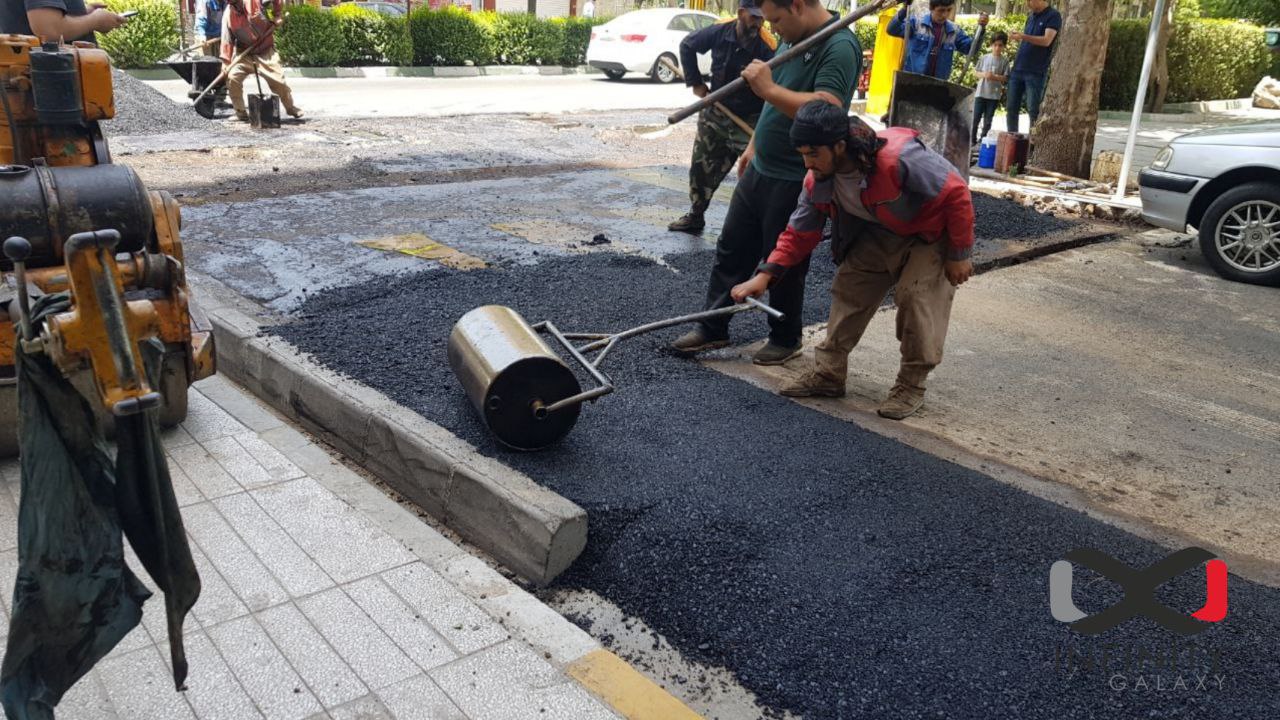Hot Mix Asphalt Paving: Your Portal to Premium Angled Parking Solutions
Hot Mix Asphalt Paving: Your Portal to Premium Angled Parking Solutions
Blog Article
Unlocking the Keys of Warm Mix Asphalt Modern Technology
Exploring the depths of hot mix asphalt innovation discovers a world where precise procedures and accurate formulations converge to shape our roadways and infrastructure. The combination of binders, aggregates, and fillers isn't just a building and construction task yet a strategic orchestration of resilience and performance. As we peer into the complex dance of elements, a tapestry of resilience and sustainability unfolds. But what exists below this surface area of asphaltic mastery, and what secrets wait to be introduced in the realm of paving developments?
Value of Hot Mix Asphalt
Warm Mix Asphalt plays an important duty in contemporary framework growth due to its longevity and cost-effectiveness. As the most typically used leading material for roads, highways, and parking lots, Warm Mix Asphalt uses a range of benefits that add to its value in building and construction projects.
The sturdiness of Warm Mix Asphalt comes from its make-up, that includes aggregates, binder, and filler materials that are carefully selected and mixed to satisfy certain performance needs. This exact mix results in a strong and versatile pavement that can sustain constant usage without substantial deterioration. Hot Mix Asphalt is 100% recyclable, additional boosting its sustainability and environmental benefits. On the whole, the value of Hot Mix Asphalt in framework development can not be underrated, as it proceeds to be a foundation of contemporary building practices.
Elements of Asphalt Mixes
The composition of asphalt blends is composed of very carefully chosen aggregates, binder, and filler products that are crucial for accomplishing details efficiency requirements. Accumulations are the key part of asphalt blends, supplying toughness and stability. These accumulations can be natural, such as gravel or crushed rock, or synthetic, like recycled products from old pavements. The binder, usually asphalt or asphalt cement, holds the accumulations together and supplies adaptability and sturdiness to the mix. The choice of the binder is essential as it straight affects the mix's efficiency in various weather condition conditions. Fillers, such as moisturized lime or Portland concrete, are used to boost the mix's workability and aging resistance. Angled Parking.
The mix and percentage of these components play a substantial role in identifying the high quality and performance of the asphalt mix. Designers meticulously design the mix to fulfill specific requirements, thinking about factors like web traffic quantity, environment problems, and sidewalk lifespan. Proper option and balancing of aggregates, binder, and fillers are essential for producing sturdy, long-lasting asphalt pavements.
Mixing and Production Methods

When the aggregates are selected, the binder, often asphalt cement, is added to bind the materials together. The binder's high quality and quantity significantly affect the mix's resistance, versatility, and strength to environmental aspects. Furthermore, fillers like moisturized lime or Portland concrete may be incorporated to boost particular features of the asphalt mix, such as its workability or dampness resistance.
During manufacturing, the visit the website accumulations and binder are heated up, usually between 250-325 ° F(121-163 ° C ), to help with mixing and guarantee appropriate finishing of the aggregates. The blending process should be complete to attain a homogeneous combination that advertises the desired efficiency qualities of the asphalt. Different strategies, such as batch blending or drum mixing, are used to attain regular and premium asphalt blends for construction projects.
Variables Impacting Asphalt Efficiency
Elements influencing asphalt efficiency encompass a series of variables that affect the toughness, durability, and overall high quality of asphalt sidewalks. One crucial variable is the quality of products utilized in the asphalt mix. The type and resource of aggregates, the binder top quality, and the additives all play a significant role in identifying the efficiency of the asphalt sidewalk. The gradation of accumulations is vital as it influences the mix's resistance, workability, and security to splitting and rutting.

Ecological conditions also influence asphalt performance. Temperature variants, moisture seepage, and website traffic tons can all influence the structural stability of the pavement. Design factors to consider, such as pavement density and water drainage, are necessary in making certain the long-lasting performance of the asphalt pavement. By meticulously considering these variables, specialists and engineers can maximize asphalt performance and boost the solution life of pavements.
Sustainable Practices in Asphalt Innovation

WMA permits for the production and placement of asphalt blends at reduced temperature levels compared to standard hot-mix asphalt, resulting in lowered power consumption and greenhouse gas discharges. The usage of permeable asphalt Extra resources blends can help reduce stormwater drainage concerns by allowing water to infiltrate with the sidewalk and into the ground, promoting all-natural water filtration and recharge processes.
Conclusion
Finally, hot mix asphalt innovation plays a vital role in modern-day framework development as a result of its toughness and cost-effectiveness. By meticulously balancing components, using proper mixing strategies, and considering numerous variables, designers can create premium asphalt mixes that withstand heavy website traffic loads and severe weather. Welcoming sustainable practices, such as using recycled materials and warm-mix innovations, additionally boosts the ecological friendliness of asphalt modern technology.
Mixing and production methods in hot mix asphalt modern technology include the accurate combination and processing of aggregates, binder, and fillers to produce a long lasting and high-performance asphalt mix.Elements influencing asphalt performance encompass a variety of variables that affect the durability, long life, and total top quality of asphalt sidewalks. Lasting practices in asphalt technology include various efforts intended at decreasing the ecological effect of asphalt manufacturing and paving processes. By incorporating reclaimed asphalt sidewalk (RAP) and recycled asphalt tiles (RAS) into brand-new asphalt blends, the industry can substantially lower the intake of raw products and energy, while additionally reducing landfill waste.
WMA allows for the production and positioning of asphalt mixes at lower temperature levels compared to traditional hot-mix asphalt, resulting in decreased energy intake and greenhouse gas emissions.
Report this page